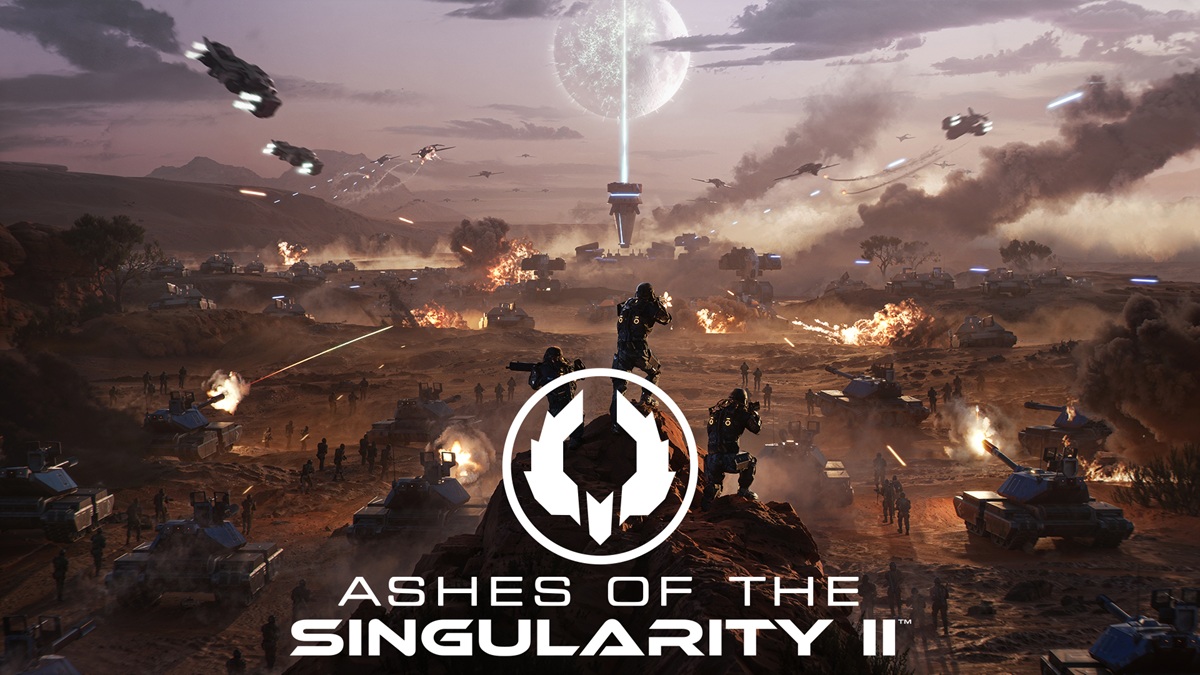Stardock and developer Oxide Games announced Ashes of the Singularity II, the long-awaited sequel to the groundbreaking, massive-scale real-time strategy (RTS) game that redefined real-time strategy gaming a decade ago.
Set to release in 2026, exactly ten years after the original, the game invites players to engage in strategic battles of unprecedented scale, depth, and intensity. And this time, the game makes use of modern AI agent technology to help human players manage the gigantic battlefield.
In the original Ashes of the Singularity, players experienced revolutionary gameplay powered by the first-ever multi-core graphics engine capable of handling thousands of units simultaneously across maps the size of entire continents. The original game sold 1.5 million copies, and it was a showcase for what game computers could do.
But those individual units weren’t very detailed when it came to 3D graphics, said Brad Wardell, CEO of Stardock Entertainment, in an interview with GamesBeat. Now, the details will be much better and the AI agents, or really AI commanders who serve as generals, will be much smarter.

“Technology wise, we’re massively different,” Wardell said. “In 2016, it was the world’s first DirectX 12 game. That was both good and bad. Everyone wanted to see what DirectX 12 could do. Everyone used it as the benchmark.”
He added, “This time, a lot has come along in terms of being able to do organics in real time. The idea was to be able to show battles at a continent scale, with hundreds of thousands of units battling it across the planet. And the new one, of course, now we can do that sort of thing and actually have people in them. So we’re able to add another faction that the actual humans are in.”
Fancy technology
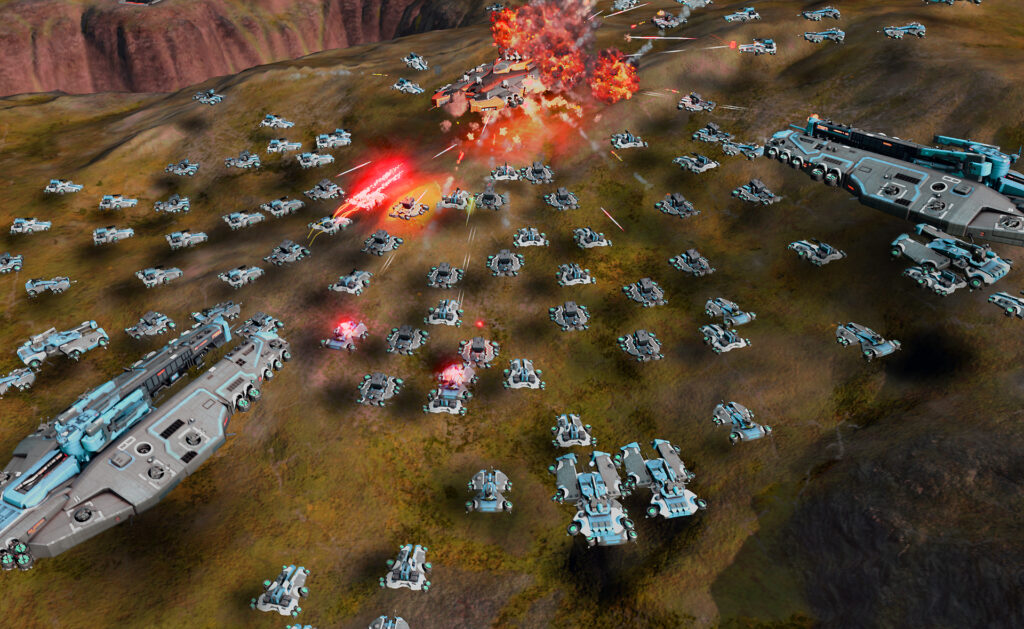
Back in 2016, the Oxide Games team created a tech called decoupled shading. You only did shading every few frames. The rendering task was light and it enable the game to run at 60 frames per second or 120 frames per second.
“It gets us really good frame rates,” he said. “The graphics this time are true, physically rendered. It’s not raytraced, but it looks like the real world from a graphical point of view.
In the past, all the units were floating hover tanks because the devs couldn’t afford to make them with details like mechs or tracked vehicles. Now, there are actual forests and hils and other terrain features.
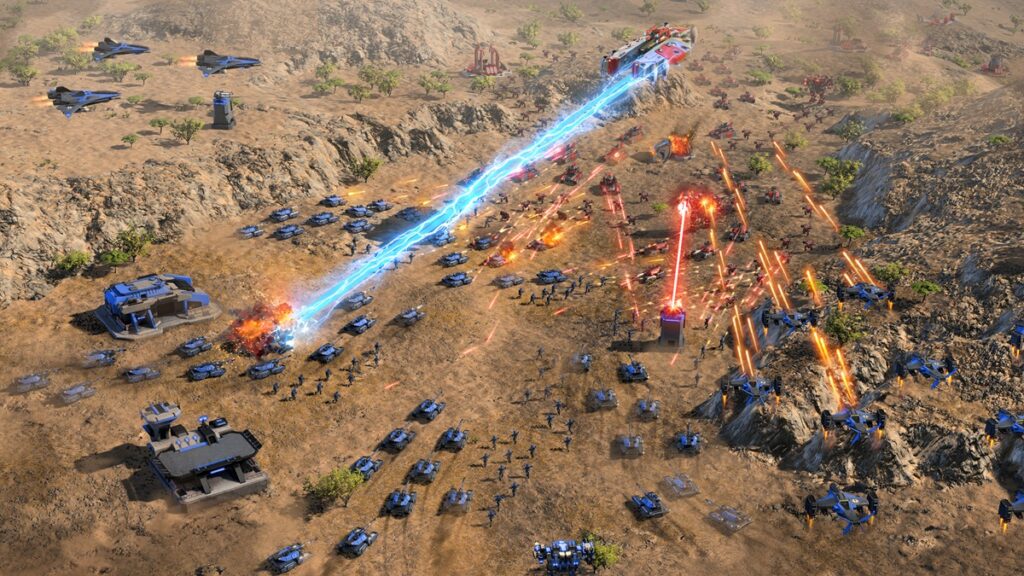
As for the number of units this time, Wardell said it will be hundreds of thousands again. But this time they will be much more detailed than was possible before. And the human player won’t have to micromanage them.
The idea is to give the human player the role of being a strategist, rather than focusing on whether the army is collecting a particular resources at a given location.
“And the AI stuff we can do is a lot more sophisticated than we could do,” Wardell said. “Looking back, it’s amazing how the hardware was pretty crazy because, back then, having a computer in 2016 with four CPU cores was a big deal. Now, a low-end machine has 12 or 16 cores. So all kinds of interesting simulation comes into play.”
The game’s forward-thinking story envisioned a future dominated by sophisticated AI managing drone constructs to battle post-human factions for control over the solar system.
The game setting
A decade later, the battle grows, with the humans of Earth having a say in their own destiny.
The previous game was set in the year 2178. The humans developed a singularity technology to expand their own capability. Over time that technology advanced on its own and became an enemy. In the year 2178, the Post-Human Coalition is in a battle against the Substrate, the artificial intelligence. It’s a massive battle that spread across the galaxy.
It wasn’t obvious in 2016, but now everybody is aware of the AI threat to human existence. In the second game (which takes plan in 2031), the group of Post-Human companies have converted the moon into the material Trinium. This has ticked off the world’s governments, and so the U.S. and NATO and Russia and China form a group called United Earth Forces.
They’re determined to reclaim Earth’s territories—including Australia and Africa—as well as vital outposts on planets and moons across the solar system, all previously overtaken by relentless AI and formidable Post-Humans. It’s a land war over rare resources in the near future.
The NATO forces have modern weapons while their AI enemies have plasma guns. And now, when the battles thake place, there are explosions and destroyed wrecks, burnt trees, destroyed villages. They don’t just disappear.
How the AI agents work
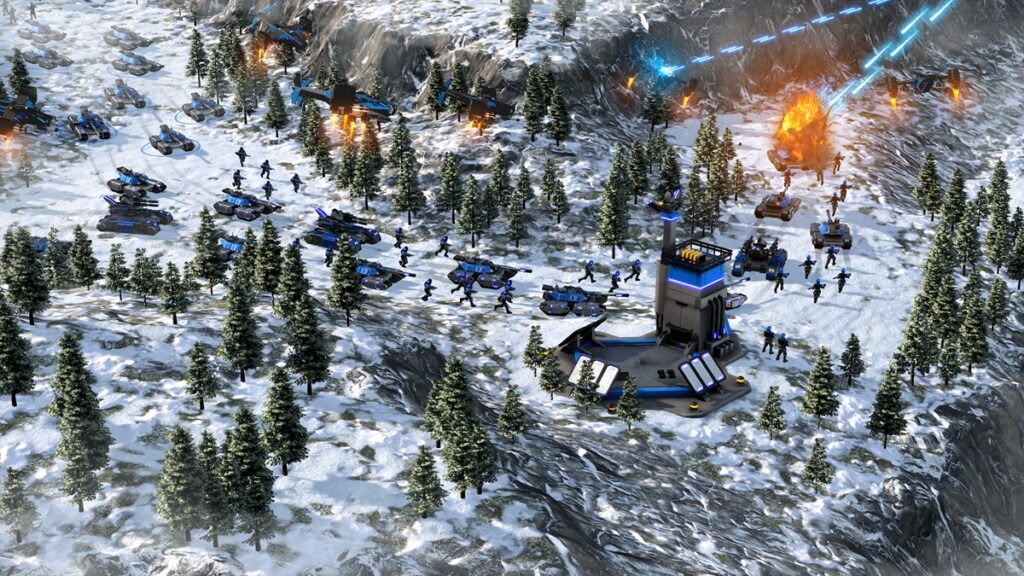
With so few cores, it wasn’t possible to have AI agents in 2016. Back then, it wasn’t possible to have AI agents who could manage armies for you. You just rounded up all of your units and sent a big blob into the battle, hoping for the best.
“We couldn’t have AI generals that took care of it for you,” Wardell said. “This time around, we actually have AI agents that can manage your armies for you. You give a command to the agent and they take care of it.”
You can order your generals to take a hill, and then they do it. But they determine what they need in order to do it, and they set up the artillery in a protected area and maneuver the tanks and the infantry to the right place before setting off an advance.
“Now, even my grandma’s machine has enough cores,” Wardell said.
Other games from the earlier era were also very ambitious, like Planetary Annihilation and Supreme Commander.
The new game at Oxide Games has about three times the budget of the original. The game has been under design for a while, but Stardock had to wait for Oxide to finish Aura: History Untold. That Microsoft game got finished late last year and work began on Ashes of the Singularity II. That means it will be in production for a couple of years, while the whole game has been considered for a long time.
Since it’s the second time around, Oxide Games will be able to develop the title much more quickly. Using the platform, the company can make games in the Lua game engine (used by Roblox) that are much cheaper as easier to make.
You can select your agent, or commander, and then give a task. The commander’s job is to move the units around for you. You’ll see that it’s actually doing formations in intelligently. But you can choose to override your commanders orders and give direct commands.
Wardell said game teams are figuring out if it makes sense to give the AI agents actual personalities, so they might make human-like decisions and mess up the chance for a perfect game. Wardell noted, there’s always some general who thinks they can take a hill at Gettysburg in an uphill charge.
The individual units aren’t really smart like humans. They’re basically bugs, Wardell said, doing what they’re ordered to do at a sub-agent level.
A big job to do
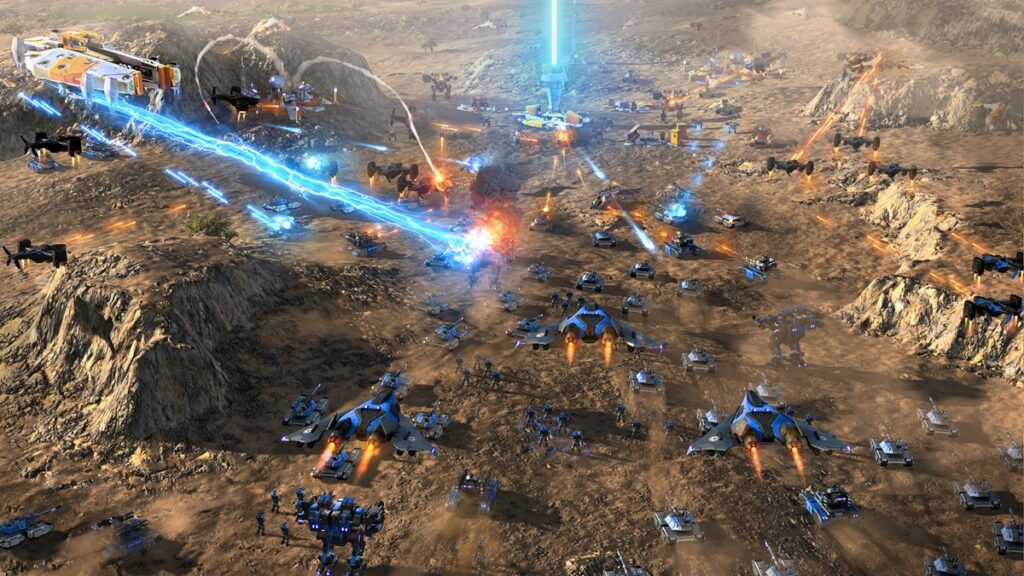
With a significantly expanded development team, Ashes of the Singularity II introduces an arsenal of advanced units and sophisticated gameplay mechanics. Players will experience greater strategic depth, intricate base-building dynamics, and intense skirmishes against intelligent computer opponents. Fans can also look forward to robust cooperative and competitive multiplayer modes.
“Ten years ago, we set a new, literal benchmark for RTS games with massive battles and groundbreaking technology,” said Wardell. “With Ashes of the Singularity II, we’re raising the bar even higher, delivering strategic gameplay depth that RTS fans have always dreamed of.”
While the gameplay and the production values have greatly improved since the original, the most obvious change in the sequel is the third faction: The humans.
“Obviously, in the first game, the number one request was to have a human faction,” said Wardell. “Back then, we just couldn’t support having thousands of organic, walking, squishy people in the world and thus had to design in favor of machines. We’re really excited to bring the humans into the war and watch how they fare against the massive mechanical armies of the Substrate and PHC.”
Developed by Oxide Games, renowned for its technological innovation, and published by Plymouth, Michigan-based Stardock Entertainment, the company behind the acclaimed Sins of a Solar Empire series, Ashes of the Singularity II promises to elevate the RTS genre once again.
Players eager to join the fight are encouraged to wishlist Ashes of the Singularity II now on its Steam page and engage directly with the development team and community through the official Discord.
The return of RTS

Asked how the company will find the audience for this game, Wardell said that is the big question. But Stardock has been around for 30 years and it has perhaps 18 million customers in its email list.
“In the past, we wanted to control hundreds and hundreds of units and but up until relatively recently, we didn’t have the hardware or the AI agents that could actually do it and make the game more fun,” Wardell said. “I think this appeals to both the hardcore strategy game players, but also to the new generation that’s not interested in messing around with hundreds of units. They want to be able to go and say, ‘Look, I just want to build my base.’ And I want to be able to give these broad tasks and see my strategy play out, rather than see how fast I can click on stuff.”
Wardell said RTS games are going to be making a comeback because they have finally reached that threshold where the things the designers were talking about a decade ago have started to become possible. This week, Frost Giant Games launched Stormgate: Campaign One — Ashes of Earth.
“In the past, if you end up with this blob, it’s not a super fun battle,” Wardell said.
Players can still choose to freeze time and pause long enough to review the strategic situation and figure out where their attention is needed most.
The game has strategic zoom, where you can zoom out and see a bird’s-eye view of the action across continents. You can also zoom in on individual units.
“We’re not gonna let you zoom in enough to see their mouths move, or anything like get into that, but you can move as close as you might see in a Civilization-style game,” Wardell said.



